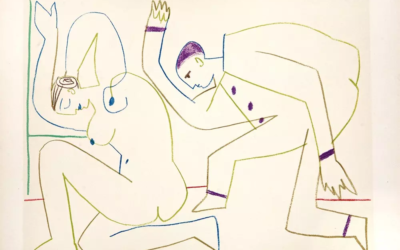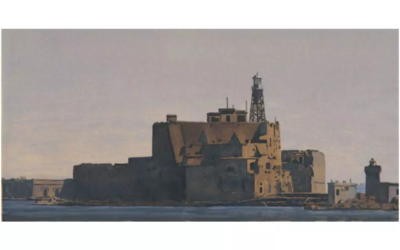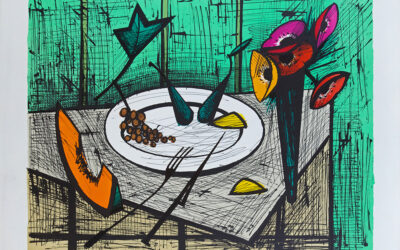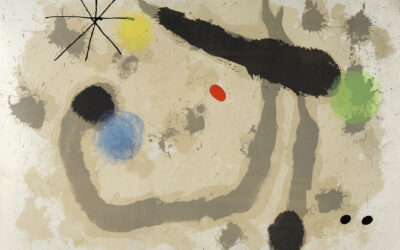
Marc Chagall, Rêve familier, 1969 © Adagp, Paris 2023
Comment authentifier une estampe ?
L’art ne cesse de captiver et de conquérir les passionnés, mais également les collectionneurs amateurs. Par son format prisé et abordable, l’estampe est la porte d’entrée du marché des œuvres d’art. Mais ces impressions originales peuvent être aussi être de simples reproductions ou leur signature peut être contrefaite, il est donc essentiel de s’assurer de l’authenticité de l’estampe avant de l’acquérir.
Quels éléments justifient l’authenticité d’une estampe ?
Une estampe, quelle que soit la technique utilisée (lithographie, gravure sur bois, eau-forte, monotype…), présente quelques caractéristiques qui peuvent permettre de distinguer une œuvre authentique d’une fausse. Si l’expertise professionnelle reste la meilleure solution pour authentifier une estampe originale, les éléments suivants pourront rassurer ou au contraire, alarmer le néophyte.
La numérotation et la signature
Pour une œuvre multiple telle que l’estampe, la numérotation est un élément essentiel qui vient justifier l’édition et l’implication de l’artiste. Cette numérotation fait référence au numéro de tirage inscrit généralement en bas à gauche du papier (5/100 par exemple), à côté de la signature de l’artiste en bas à droite. Par exemple, si l’estampe est numérotée 5/100, cela signifie que l’artiste a réalisé 100 épreuves identiques, et que celle que vous avez entre les mains est la cinquième Impression.
Toutefois, veillez aux fausses signatures. Qu’il s’agisse de l’œil d’un collectionneur chevronné ou d’un novice en matière d’art, il est assez complexe de détecter une fausse signature. Pour authentifier une estampe que vous convoitez, référez-vous au catalogue raisonné de l’artiste permettant de vérifier le tirage d’une estampe, le type de signature et faites-vous accompagner par des professionnels en la matière.
La mention hors commerce
Il faut savoir qu’en plus des tirages numérotés pour la diffusion de l’œuvre, quelques feuilles sont réservées à l’artiste, à l’imprimeur et aux collaborateurs de l’artiste. Ces impressions supplémentaires portent alors les mentions E.A. (épreuve d’artiste) ou H.C. (hors commerce), prouvant l’authenticité de l’estampe.
Ces épreuves, à l’origine destinées à la conservation par l’artiste et les collaborateurs d’exemplaires de chaque tirage, peuvent apparaître sur le marché après un certain temps, au fil des décès, successions ou besoins de mettre en vente des œuvres.
Dans le domaine de l’estampe, les épreuves d’artistes ou hors commerce ont la même valeur numéraire que les épreuves numérotées.
Il existe également un exemplaire unique de chaque tirage, signé par l’artiste et annoté BAT ou “Bon à tirer”. Ce document est la dernière épreuve de test qui valide et autorise le tirage. S’agissant d’un document unique, les bons à tirer ont une valeur plus importante que celle du tirage numéroté.
Le papier
Par sa texture, son grain ou encore son poids, la qualité du papier peut être typique d’une époque précise ou encore de lieux de production. Une analyse du filigrane du papier vient souvent permettre de dater et de déterminer l’origine de l’estampe. Les différents papiers utilisés pour un tirage sont par ailleurs souvent répertoriés dans le catalogue raisonné de l’artiste, aidant ainsi à l’authentification des œuvres.
Quelques conseils sur les méthodes d’authentification d’une œuvre d’art
Authentifier une estampe est généralement un processus complexe qui demande des connaissances spécifiques en histoire de l’art, en techniques d’impression ainsi qu’une bonne maîtrise de la production de l’artiste et de son contexte. Aujourd’hui, lorsque l’on souhaite acheter ou collectionner des estampes, il peut arriver d’acquérir une œuvre contrefaite, même lorsque l’on est un collectionneur aguerri. Voici quelques conseils que vous pouvez appliquer avant d’acquérir une estampe.
Examinez attentivement l’estampe
Regardez tout d’abord les détails de la feuille et examinez la qualité de l’impression. Vous pouvez rechercher des marques d’imprimeur, telles que des tampons ou encore des inscriptions provenant d’un précédent possesseur. Toutes les inscriptions présentes sur la feuille peuvent fournir des indices sur l’artiste, la technique d’impression, le processus de création et l’histoire de l’estampe. Pour savoir si vous êtes face à une véritable œuvre d’art, il est important de vous “faire l’œil”. Apprenez à lire dans les marges, et plus vous rencontrerez de signatures d’un artiste, plus vous saurez reconnaître une mauvaise ou une fausse signature.
Réalisez des recherches sur l’artiste
Documentez-vous sur un artiste qui vous tient particulièrement à cœur et apprenez tout ce que vous pouvez sur l’artiste qui a créé l’estampe. Collectionner des œuvres requiert des connaissances, d’où l’importance de rechercher des informations sur la vie de l’artiste, son style artistique, sa technique d’impression préférée et les marques qu’il utilisait pour signer ses estampes.
Comparez l’estampe au catalogue raisonné
Pour vous aider dans l’authentification de ce médium, le catalogue raisonné d’un artiste est l’outil de référence utilisé par tous les professionnels du marché de l’art, et qui doit devenir également le vôtre. Le catalogue raisonné répertorie toutes les œuvres connues créées par un artiste durant sa vie. Pour les grands artistes, les catalogues raisonnés sont réalisés par médium (peintures, sculptures, céramiques, gravures, lithographies, etc). Consultez le site de l’IFAR (International foundation for Art Research) pour connaître les catalogues raisonnés existants.
Vous trouverez dans un catalogue raisonné la description la plus complète possible des œuvres d’un artiste. Il procure aussi de précieuses informations sur la production de l’artiste, sa manière de travailler, ses éditeurs et imprimeurs, ainsi qu’une étude de ses différentes signatures.
Obtenez une expertise professionnelle
Si vous n’êtes pas sûr de l’authenticité de l’estampe, il est préférable de faire appel à un expert en art pour obtenir une estimation professionnelle. Cette démarche est d’autant plus importante pour les estampes d’artistes de renom ou historiques, car leur valeur peut être très élevée et de ce fait de nombreux faux peuvent circuler sur le marché de l’art.
Par leur œil acéré et leur connaissance pointue de la production des artistes et du marché de l’art, ces experts en art peuvent examiner l’estampe de manière approfondie (techniques utilisées, traitement des matériaux, trait du dessin…) pour déterminer l’authenticité de l’œuvre. Une estampe révèle des textes et des motifs déterminants pour repérer un courant artistique, une époque ou encore un pays d’origine prouvant son authenticité. L’authentification d’une estampe est essentielle pour garantir son origine et sa provenance, mais également pour réaliser son estimation. La Galerie d’art Arenthon à Paris propose des certificats d’authenticité pour les œuvres qu’elle vend, signés par ses deux experts, Messieurs Yves et Marc Lebouc, respectivement expert à la Chambre Nationale des Experts et près la cour d’Appel de Paris.
Faire estimer une estampe
Se faire une idée de la valeur d’une estampe sur le marché de l’art et procéder à son estimation est toujours une démarche pertinente, notamment dans le but de valoriser une collection d’estampes.
Nous vous recommandons de faire estimer votre estampe à Paris par un expert en art. Il pourra vous donner une estimation précise en fonction de de l’artiste, de la rareté de l’estampe, de son état de conservation, de sa provenance, de sa date et de sa qualité.
Afin de faire estimer votre ou vos estampes, vous pouvez contacter une galerie spécialisée, un expert reconnu ou encore une maison de vente aux enchères. Chaque interlocuteur a en principe une époque ou une région de spécialité. À la galerie Arenthon, nous sommes par exemple spécialisés en estampes modernes (première moitié du XXe siècle) et nos experts sont mandatés par le Comité Chagall et autorisés par la Picasso Administration pour authentifier les estampes de ces artistes.
Vous désirez commencer une collection d’estampes ? Pour avoir la garantie d’acquérir des œuvres authentiques, il est conseillé de se tourner vers une galerie spécialisée, reconnue et respectée dans le milieu. La Galerie Arenthon vous propose une vaste collection d’estampes. Découvrez les œuvres !





